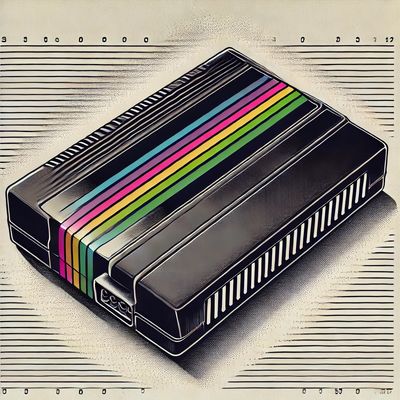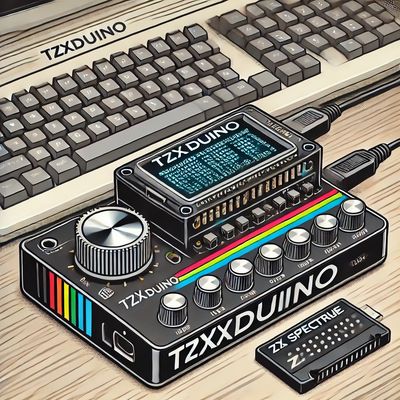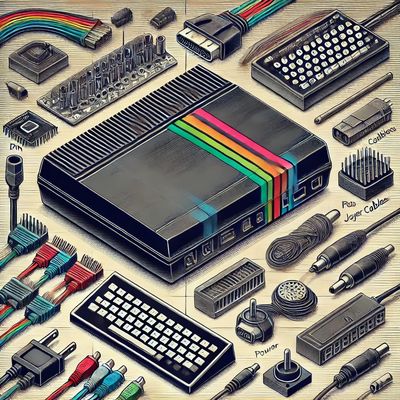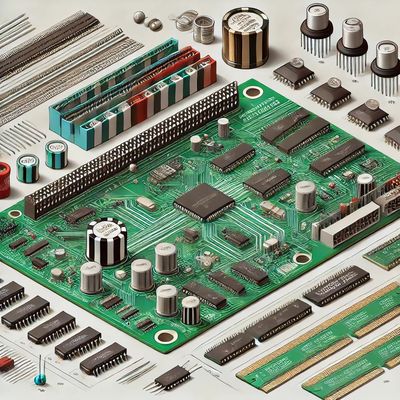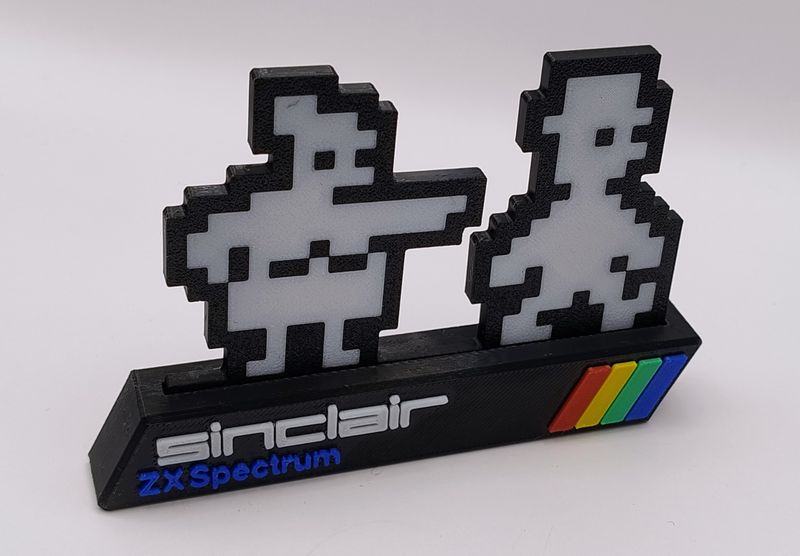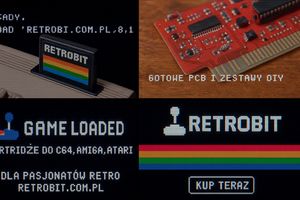ZX Spectrum, ZX81
Detailed History of the ZX Spectrum – A Pixelated Odyssey with a Rubber Keyboard!
Introduction: How Speccy Won Hearts
The ZX Spectrum, affectionately called “Speccy,” is the 8-bit king of the 1980s that brought computers into homes before “internet” sounded like a spaceship name. Produced by Sinclair Research, this plastic marvel with a rubber keyboard sold 5 million units, igniting a love for pixels and BASIC. From Manic Miner to Jet Set Willy, Speccy is a nostalgic time capsule that still has us hunting for DIY clones on Retrobit.com.pl. Ready for a retro rollercoaster? Buckle up!
Beginnings: Sir Clive and His Wild Ideas
It all started with Clive Sinclair, a British visionary who looked like he invented gadgets in a Back to the Future garage. In 1961, he founded Sinclair Radionics, churning out calculators and mini-TVs, but in 1979, the government’s National Enterprise Board said, “Clive, enough!” With compensation in his pocket, he launched Science of Cambridge (later Sinclair Research), and BAM! – in 1980, the ZX80, a computer for under £100, sold 100,000 units. Then came the ZX81 (1981, 1.5 million units) – a monochrome hit that looked like R2-D2’s cousin designed it. Built in Dundee by Timex, these machines were the prelude to Speccy – “ZX81, but with color, because gray isn’t life!”
Birth of a Star (1981–1982)
In autumn 1981, in a Cambridge office smaller than a Dizzy level, 20 engineers led by Richard Altwasser crafted the “ZX82.” Name? “Spectrum” – because 15 colors were a riot, like Picasso painting with pixels! The ULA (custom chip) acted as an orchestra, handling 256×192 px graphics with the iconic “attribute clash” – when colors fought like siblings over the last slice of pizza. The 16 KB ROM with BASIC by Steve Vickers (Nine Tiles) taught kids to code, while Rick Dickinson’s case with a rubber keyboard (40 keys, 192 functions!) looked like it was designed during a tea break. Manufactured in Timex Dundee.
The launch on April 23, 1982, at London’s Churchill was a hit: 16 KB for £125, 48 KB for £175. Mail orders? A 40,000-unit backlog – people pounced on Speccy like free lives in Jet Set Willy! By the end of 1982, 200,000 units sold, hitting a million by 1983. In the USA, as the Timex Sinclair 2068 (72 KB RAM), it flopped like a player on the final boss.
Specifications: What Powered This Wonder
- CPU: Z80A @ 3.5 MHz – a heart faster than a Sabre Wulf player.
- Memory: 16/48/128 KB RAM, 16 KB ROM – like a pocket TARDIS.
- Graphics: 256×192 px, 15 colors with attribute clash – “red or blue? Pick one!”
- Sound: Beep! (later AY-3-8912 in 128 KB models – 3 channels for R-Type).
- Input: Rubber keyboard (like playing piano on jelly), cassettes (1500 baud, 5-minute loading for Elite).
- Weight: 552 g – lighter than your nostalgia.
Flaws? Cassette loading like waiting for Godot and attribute clash, but programmers worked miracles, like painting the Mona Lisa on a calculator.
Golden Years and New Models (1983–1986)
Speccy dominated the UK (40% market share), dodging the 1983 gaming crash. 450 companies wrote games; Sinclair earned £14 million in 1983, and Clive was knighted – probably for giving kids The Hobbit instead of math lessons. Competition? Commodore 64, BBC Micro, Amstrad CPC – but Speccy had soul!
- 1984: ZX Spectrum+ (£179) – “non-rubber” keyboard, reset button. Sales? 2:1 vs. original.
- 1985: ZX Spectrum 128 (“Toast Rack”) – 128 KB RAM, AY sound, MIDI/RS-232. Launched in Spain (taxes!), UK in 1986.
Clive went wild: the QL (1984) flopped, the C5 (1985, tricycle “car”) was a 17,000-unit joke. In 1986, Amstrad bought Sinclair for £5 million as cash melted like lives in Chuckie Egg.
Amstrad Era and Decline (1986–1992)
Amstrad didn’t rest on its laurels:
- +2 (1986): £149, built-in cassette, joysticks – Speccy like a console!
- +3 (1987): £249, 3.5" floppy, CP/M – for those wanting to be “businessy.”
- +2A/+2B (1988–1989): Black case, cheaper – like Speccy in a leather jacket.
Production ended in 1992. Sales? Over 5 million units. Game over? Not quite!
Clones, Peripherals, and Global Craze
Speccy spawned clones: Timex 2048/2068 (Poland, Portugal – a hit), dB Spectrum+ (India, 50,000 units), over 50 Soviet clones (e.g., Pentagon), Didaktik Gama (Czechoslovakia), TK90X (Brazil). Peripherals? ZX Printer (museum piece), Microdrive (data-losing tape), Kempston joystick, Multiface (cheats!).
Games and Culture – Pixelated Masterpieces
24,000 titles: Elite (open-world space), Knight Lore (isometric revolution), Jet Set Willy (level 100 frustration). Magazines (Your Sinclair, Crash) were like bibles. Speccy birthed Rare, David Perry, and the demoscene. In the Eastern Bloc? Pirated cassettes and clones fueled a gray market.
Legacy – Speccy Lives Forever!
Speccy taught kids to code before “hacker” was cool. It shaped UK IT and the Eastern Bloc (100,000 Didaktiks!). Clive passed in 2021, but 2022 marked its 40th anniversary. ZX Spectrum Next (2017, FPGA, 1 MB RAM) and The Spectrum (2024) are new incarnations. Documentaries (The Rubber-Keyed Wonder) and stores like Retrobit.com.pl keep pixels alive. Emulators? World of Spectrum is a museum. Speccy isn’t a computer – it’s a love that still makes us type LOAD "" and dream of 48 KB happiness!

